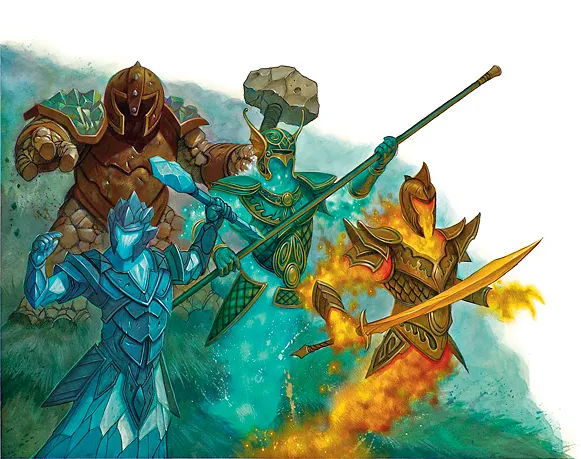Four paths to a successful OSR game

Edited 10/12 to clarify points of confusion and add new examples.
If you’re making an OSR-ish, ’crawl-centric game, there are basically four proven pathways to critical and commercial success (as limited as the critics and the commerce may be).
A: Lean into nostalgia for classic D&D. Succeed through strong presentation and lots of GM support (random tables, GM advice, monsters and magic items, first-party adventures, etc.).*
For example: Dungeon Crawl Classics, Old-School Essentials, Worlds Without Number, Shadowdark.
*You might argue that these things are important to games in all the categories, but I think they’re especially critical if you’re making “yet another retro D&D game” and you want to stand out.
B: Create an original setting that justifies and recontextualizes OSR-style ’crawls. Succeed with a strong hook that gets designers excited to make content for your game.
For example: Mothership, Mörk Borg, Mausritter.
C: Make a capsule game: an adventure and a ruleset rolled into one. Making a successful adventure is outside the scope of this post, but if the adventure is good and the ruleset ties in well, people will want to play them.
You might subdivide Path C into two categories: games that include a static, premade adventure (Dolmenwood, Ultraviolet Grasslands) and games that give you in-depth tools to generate adventures (Mythic Bastionland, Vaults of Vaarn).
D: Design an innovative ruleset that solves problems GMs and players have. Document and explain your design decisions to convince an audience of fellow designers of your genius.
For example: Into the Odd, Electric Bastionland, Knave 1E.
COMMENTARY (roll a d6)
- Path A is a cornered market. You’re very unlikely to outdo OSE or Shadowdark in terms of nostalgia or presentation. Your best bet is innovating in the arena of GM tools, but even then, do your new GM tools really justify an attached system?
- Path B is where all the indie darlings live. If your game gets designers excited, then you have the beginnings of a community that will support your game. Who doesn’t want to design a derelict for Mothership or a Mörk Borg hack or a tiny dungeon for Mausritter these days? But if it were easy to come up with a strong pitch like that, everyone would do it.
- Rulesets are a dime a dozen; adventures are precious. When you tie a ruleset to an adventure, the ruleset becomes a lot more valuable by association. Just keep in mind that Path C gives other designers less room to make things and expand on your game than Path B does.
- The problem with Path D is that your community will take your amazing original ruleset and just make new games with it via Paths A, B, and C. Everyone loves Into the Odd, but they prefer to play Mausritter or Cairn or Liminal Horror or Silent Titans.
- Speaking of Cairn… this game is somehow Paths A, B, and D all at once? It’s going for classic D&D nostalgia, it’s got a pitch to designers (make something with a forest-y, folk-horror theme), but people recommend it primarily for its ruleset. It’s got a bit of a “jack of all trades, master of none” thing going on.
- Paths A, B, and D probably all have diminishing returns. You can only recapitulate D&D nostalgia so many times; there are only so many genres to set a dungeoncrawler in; the rules can’t get much lighter. You can make infinite custom systems for bespoke adventures, though.